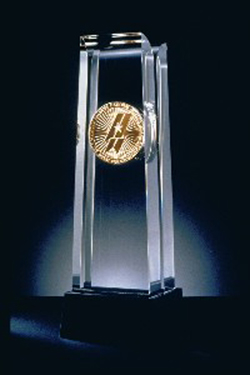 My own personal observation is that the Baldrige National Quality Program is one of the most misunderstood, unknown and poorly marketed great programs for organizations seeking a framework for business performance improvement.
My own personal observation is that the Baldrige National Quality Program is one of the most misunderstood, unknown and poorly marketed great programs for organizations seeking a framework for business performance improvement.
Cash for Clunkers, it ain’t! We would all be better off if it got one-tenth of the airtime of that well documented automobile sales promotion.
What’s the first thing that you think of when you hear Baldrige? Of course, quality jumps to mind and specifically, thanks to advertising, many people think of automobile quality. If you’re like most people, you’ve seen pictures of the actual glass award in commercials and you might have even viewed a clip of one of our Presidents shaking hands with the CEO of a Baldrige winner.
I recently asked a small group of professionals what they knew about the Baldrige program and one person asked whether it wasn’t a quality award for winners of the JDPower survey! At least she was partially right, as quality is an important component.
OK, and in my opinion, that’s the other misnomer. Certainly the program has its roots in Quality (with a capital Q), but it’s much more comprehensive than the many other very good programs and frameworks that focus specifically on quality and process improvement.
Baldrige is a comprehensive framework for organizational performance excellence, focusing on seven core categories (the criteria):
- Leadership
- Strategic Planning
- Customer and Market Focus
- Measurement Analysis and Knowledge Management
- Workforce Focus
- Process Management
- Results
From the Baldrige website: ‘The criteria are designed to help organizations enhance their competitiveness by focusing on two goals: delivering ever improving value to customers and improving overall organizational performance.’
This is much bigger than measuring defects. This is much bigger than a glass trophy.
Resources You Can Use Immediately:
I encourage business professionals at all levels to become familiar with the Baldrige program and the treasure trove of incredible materials…many of which are either free or low cost.
Read: The Criteria for Performance Excellence. It’s better than a month of MBA courses on understanding the criteria in detail and what factors are considered when evaluating high performance in those areas.
Download and Use: the two great surveys: “Are We Making Progress” and “Are We Making Progress as Leaders”. These are free, and you are encouraged to use, copy, distribute and employ these surveys inside your organization. (Note to my many leadership blogging/consulting/training friends, this content is golden!) Even outside of the umbrella of formal pursuit of the Baldrige Award, these survey instruments can prove remarkably helpful for any firm attempting to assess where it is at on many levels.
Review: the Judges Survey of Applicant Satisfaction presentation summarizing the survey results on what prior participants have to say about the program. Most joined for the purpose of driving improvement…not to win an award. The participants also indicate areas of improvement for the Baldrige process and examiners.
Purchase and watch: for $35 plus shipping and handling, the detailed Award Recipient DVDs. While there is a bit of program hype, mostly you’ll gain context on how some now pretty impressive small and large companies have used the program to dramatically improve their organization’s performance. These live case studies are priceless.
Talk: to a Baldrige program award winner or an examiner. The program and participants are remarkably open to inquiries and to sharing experiences and highlighting what to expect if you decide to pursue the process. Watch the videos and place a few calls and you’ll have some remarkably fresh insights and ideas on the program and how it might help your business.
Consider: applying. While there is ample material on what is involved and there will be time required to apply…and of course to assess, you gain access to some of the best, low to no cost business performance consulting on the planet through the Baldrige examiners. Again, don’t underestimate the commitment required to benefit from the process, but don’t run away from it because of that either.
The Bottom Line:
It’s time to shake our misperceptions about Baldrige. It is a powerful framework for business performance improvement. I’ve dealt with many CEOs that behind closed doors admit to not being certain about where to start and what to focus on to fuel results.
Before you call on the expensive consultants, take a few hours and investigate Baldrige. You might just find some great starting points.
